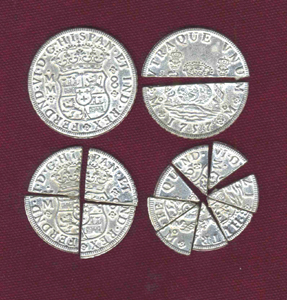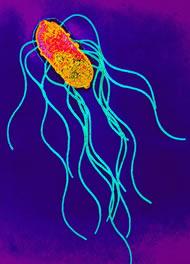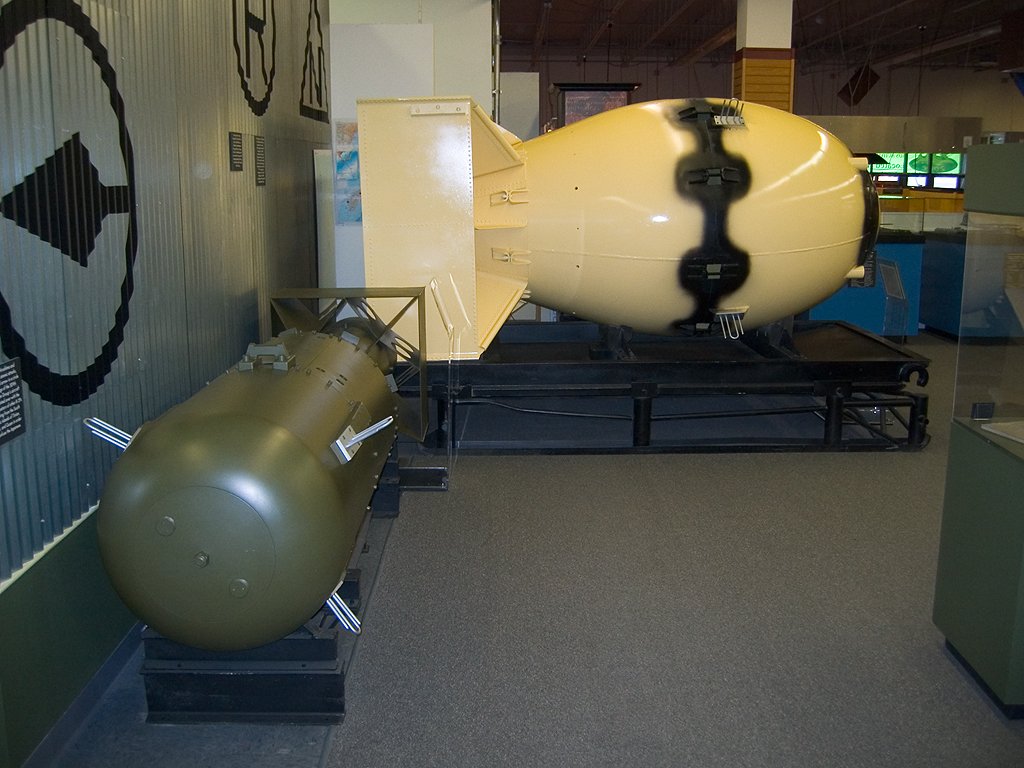THE MERKLE BONER
History and sports have moments that will immortalize people for just being there at the right time or the wrong time. When Steve Bartman, a lifelong avid Cubs fan touched the fly ball that could have been caught, by virtue of being in the wrong place at the right time, changed a potential return to the World Series into a pivotal, momentum shifting Divisional Series loss. That poor man has been vilified, received death threats, and has gone into seclusion for fear of his life. Back in 1908, the last time the Cubs won the World Series, they got there by virtue of an event that was even more controversial. Try to think of combining Steve Bartman's touch, with Don Denkenger's call, Billy Martin and George Brett's pine tar incident and Bill Buckner's ball between the legs and you will start to get the flavor for the "Merkle Boner"
This is a very long post, so you may want to copy it, print it, and read it at your leisure. This is the best description of the account I have ever come across, and it is taken directly from Frank Deford's book THE OLD BALL GAME. I'm not sure this is strictly legal because of copyright laws, but I have to believe this is good free advertising as it gives you a taste of Mr. Deford's book about John McGraw and Christy Mathewson, the original odd couple of baseball. I highly recommend this book to anyone who is a fan of baseball history.
First, let me define some nicknames. "The Big Six" and "Matty" refer to Christy Mathewson. Muggsy is the nickname for John McGraw. and "Ironman" is the nickname of Joe McGinity. "Cranks" are what we would call "fans" today. So, enjoy!
 ------------------------------------
------------------------------------The Cubs won handily in 1907, too, piling up 107 victories. They were a marvelous fielding team, featuring the double play combination of Joe Tinker, Johnny Evers, and Frank Chance (the "Peerless Leader," who also managed Chicago). At a time when poems were a staple of the sports pages and sportswriters were not afraid to use words like "gonfalon," the most famous sports rhyme ever was written by Franklin P. Adams in the Evening Mail, immortalizing the six-four-three double play:
These are the saddest of possible words—
Tinker to Evers to Chance.
Trio of Bear Cubs and fleeter than birds—
Tinker to Evers to Chance.
Thoughtlessly pricking our gonfalon bubble,
Making a Giant hit into a double,
Words that are weighty with nothing but trouble:
Tinker to Evers to Chance.
The Cubs also possessed one truly great pitcher, Mordecai Peter Centennial Brown, who was born, as you might imagine, in 1876 and was called "Three-Fingered" Brown because, when he was seven years old, he had stuck his hand in a corn shucker. He lost most of his index finger, and one other digit and his thumb were mangled, but professionally this turned out to be a blessing because his mutilated hand somehow helped him break off a curveball that Ty Cobb called "the most devastating pitch I ever faced." It was certainly a match for Mathewson's fadeaway, and indeed, Three-Fingered was Matty's greatest rival.
In 1908, though, Matty was at the height of his powers, and Three-Fingered had a fabulous season, too: a 29-9 record with a 1.47 ERA. Mathewson, though, was even more magnificent. He was 37-11, 1.43; he completed thirty-four of forty-four starts, throwing a dozen shutouts. In 391 innings pitched, he struck out 285 men and walked only 42, barely one per nine innings. The Giants were improved at the bat this year, too. largely because Turkey Mike Donlin had returned after a hiatus in which he had devoted himself to traveling with his bride, Mabel Hite a beautiful chanteuse. In 1908, though. Turkey Mike was on the wagon and so well behaved that McGraw even made him captain. He hit .334, drove in 106 runs, and kept the Giants in the pennant race. Not only did the Cubs fall back. but the Pirates also moved up in what turned out to be a three-team dogfight as good a pennant race as ever there has been- The Giants drew 910,000 fans, a quarter of the league total, and a major league attendance record that lasted until 1920, when The Babe and the Yankees passed a million.
On September 23 the Giants and Cubs were only six percentage points apart, just ahead of the Pirates, when thirty thousand fans showed up at the Polo Grounds to watch Matty face off against the lefty Jack Pfiester, who, for his uncommon success against New York, was known as Jack "the Giant Killer " The Giants needed Matty's best. They had lost a doubleheader to the Cubs the day before and the team was hurting. "How are the cripples?" McGraw asked as he came into the clubhouse "Any more to add to the list of identified dead today?"
Well, yes, as a matter of fact. Fred Tenney, the yeoman first baseman, had woken up with an attack of lumbago, so McGraw had to put Fred Merkle into the starting lineup for the first time all season. Merkle was a big Wisconsin farm boy who had come up to New York the year before, but he was still only nineteen years old.
But "Big Six," in his greatest season, was up to the challenge holding the Cubs to just one run. Jack Pfiester had good stuff too, though, and the wounded Giants themselves had managed only a single run as they came to bat in the home half of the ninth And here came the most spectacularly controversial inning ever
With one out, Art Devlin, the third baseman, singled. Moose McCormick—like Mathewson, a Bucknell man—forced him at second, but then young Merkle took Pfiester the other way, lining a single to right, sending McCormick to third. Al Bridwell, the shortstop, then swung at Pfiester's first pitch and laced a clean single dead up the middle. In fact, the field umpire, Bob Emslie, had to fall down to escape being hit by the line drive. He got up and dutifully watched Bridwell run safely to first. The plate umpire, Hank O'Day, saw McCormick touch home for the winning run: 2-1, Giants. New York was back in first place, and the fans poured out of their seats. As one reporter wrote: "The merry villagers flocked onto the field to worship the hollow where the Mathewson feet have pressed."
Matty himself ran out to embrace the happy Merkle and escort the young fellow off the field.
Meanwhile, almost unnoticed, Johnny Evers, the Cubs second baseman, was standing on second, calling for the center fielder, "Circus" Solly Hofman, to chuck him the ball. Evers was a fidgety little guy who stood at no more than five-feet-nine and weighed only 125 pounds. Nobody, including his teammates, much liked him, but he was a heady ballplayer. Also, he had noticed this same situation only weeks before, in Pittsburgh, but had been unsuccessful in prosecuting his charge then. But here it was again: Merkle, the man on first, was required to move up a base once Bridwell hit safely. No matter how quickly McCormick, the runner on third, crossed the plate, if Merkle didn't touch second, then he was forced out, the inning was over, the run didn't count, and it was still a 1-1 tie.
Three different pitchers - McGinnity, Wiltse, and Mathewson - all seemed to have later remembered that they were coaching first. Since it was the first base coach's responsibility to tell the runner to be sure to go down and touch second, it's odd that anyone would claim that dubious honor. Anyway, almost surely it wasn't Mathewson; he was pitching, after all. McGinnity is the likely choice, because only he of all the Giants seems to have caught on to what Evers was up to.
Apparently the Iron Man ran out and wrestled the ball away from little Evers (or from a Chicago pitcher, Rube Kroh - details of the chaos differ in almost every account) and hurled it as far away as he could, into the stands. Maybe there was even a fight. "Fists flew on all sides, eyes swelled up and blood flowed," wrote the World reporter. Did a Cub reserve pummel the fan who caught the ball in order to retrieve it? Whatever, undaunted, Evers somehow regained possession of that ball or, more likely, simply produced another, hailed Emslie, stepped on second, and claimed that Merkle was out. Emslie said he couldn't rule; he hadn't been watching Merkle. But prompted by the indomitable Evers, Emslie asked his colleague, O'Day, if he had seen the play at second. Indeed he had, said O'Day, and, yes, Merkle had turned round on the base path before reaching the base. Therefore he was now forced out and McCormick's run for the Giants didn't count.
By now the field was overrun with the merry villagers and the early autumn gloaming was coming down. Most everybody left the park believing Matty and the Giants had won. Mathewson remembered that even when the Giants, in their clubhouse, heard about O'Day's call, they at first "laughed, for it didn't seem like a situation to be taken seriously." When they realized that O'Day really had called Merkle out and the game a tie on account of darkness, the mood grew darker. Mathewson was bitter. "If we lose the pennant thereby, I'll never play pro ball again," he declared. Muggsy, of course, was angrier and more profane, snarling: "That dirty son of a bitch. O'Day is trying to rob us."
Poor Merkle was utterly distraught. In the days that followed, Mathewson would write, "He moped. He lost flesh" - twenty pounds - "his eyes were hollow and his cheeks sunken." The kid was lacerated in the press. W. A. Aulick, the Times baseball reporter, wrote simply that it was "censurable stupidity on the part of player Merkle." The home fans would hiss upon his appearance on the field. It was, wrote the Sun, "a situation that has baseball cranks all over the country by the ears." The "boner," it was called - the Merkle Boner, the dumbest mistake ever made by a player. Never mind that Merkle was only following the fashion of the time. He had done exactly what that Pittsburgh player had weeks earlier, as Evers watched. The Giants' first base coach, whoever he was, must surely have been at least as culpable. The kid was still a teenager, for goodness sakes. Mathewson admitted that, joyously, he had run to him. Mathewson didn't tell him to touch second. McGraw didn't shout it out. In fact, ironically, this was exactly the sort of rule-book intelligence that McGraw was famous for exploiting. And for all the bleatings and threats of the Giants and their fans, even the owner, John Brush, had to admit that "technically" - always technically, not "actually" - Evers and O'Day were right.
Harry Pulliam, the "boy president," was once again forced to rule in a Giant maelstrom, and, after a week, he upheld the umpires. Tie game. Terrible hate mail poured into his office.
Merkle, meanwhile, was so depressed that rumors of this suicide began to float about, In fact, he did beseech McGraw to farm him out. "Lose me," the kid pleaded. "I'm the jinx."
McGraw was steadfast. "It wasn't your fault, Fred," Muggsy said, consoling him. Indeed, so supportive was McGraw that he gave Merkle a raise for the next season.
Since New York and Chicago had finished with identical 98-55 records, the tie game of September 23 must be played off to determine the league champion. (Pittsburgh would finish tied for second at 98-56 with whichever team lost).
Great tales are now told about the Giant-Dodger playoff of 1951, which ended with Bobby Thomson's home run, the fabled "shot heard round the world." In fact, that best-of-three series didn't attract a single sellout. Only 34,320 fans - a mere two-thirds of the Polo Grounds' capacity - showed up for the finale. Famous as it is, that '51 playoff pales before the Giants-Cubs showdown on Thursday, October 8, 1908.
Estimates of the crowd that stormed the Polo Grounds ranged as high as a quarter million. Probably it was closer to a hundred thousand, but however many were left outside, at least forty thousand managed to squeeze into the park, filling up the bleachers and grandstand hours before Matty threw the first pitch. Police reinforcements had to be called, and a hundred more "bluecoats" rushed up to Coogan's Bluff. But nothing stopped the crush, not even fire hoses and drawn pistols. Barbed-wire fences were scaled, pushed down.
Scores of people were injured, and it was probably fortunate that only one man lost his life. That was an off-duty fireman, one Harry T. McBride, who tumbled twenty-five feet from a vantage he had taken at the 155th Street elevated train station. "His vacant place was quickly filled," it was duly reported. Indeed, every telegraph pole that offered any view of the field was climbed by intrepid onlookers. One spectator fell out of the grandstand itself but, luckily, only broke a leg. When attendants rushed to carry him off to an ambulance, he beseeched them not to remove him from the premises until after the game.
The Cubs, of course, needed considerable protection. They were mad enough as it was, as loud and unruly home team fans had encircled their hotel the night before for all hours, seeking to keep up such a racket as to prevent the Chicagos from enjoying any sleep. McGraw then added to their nerves by keeping the Giants on the field beyond their allotted practice time. Frank Chance and Iron Man McGinnity nearly came to fisticuffs as the dispute raged. Later, Chance would be hit in the neck by a soda pop bottle hurled from the stands. Three-Fingered Brown, who was posted to the bull pen, felt that the Polo Grounds on this day was "as close to a lunatic asylum as any place I've ever seen."
Mathewson, meanwhile, tried to keep his composure. After all, he had a secret that he had shared with Jane before he left their apartment. What he told her, simply enough, was: "I'm not fit to pitch today." The long season had worn him down, and when Matty warmed up, it only confirmed his fears. "I never had less on the ball in my life," he would say. He thought the Cubs would clobber him. "I'll go as far as I can," he told McGraw as he took off his linen duster and headed, disconsolately, to the mound.
As it was, Mathewson put down the Cubs in the first inning, and then the Giants lit into Jack Pfiester, the erstwhile Giant killer. When the Giants scored a run, Mathewson sneaked a peek down the bench at Merkle and saw that "for the first time in a month, Fred smiled". Pfiester was clearly on the ropes. He was nervous and bitching at the umpire's calls. But Buck Herzog got caught off first, and Frank Chance didn't even wait for the inning to end. He brought in Three-Finger, and he put out the fire before the Giants could score any more.
And, really, that was it. Mathewson's suspicions were realized in the third inning. Joe Tinker, who earlier in his career had enjoyed no success against Big Six, had then taken to hitting against him with a bigger bat. With that, he had become, as Hooks Wiltse said, "the only hitter I know of had a jinx on Matty." And it was Tinker who made the hit that broke the game open. It was a triple over the center fielder's head. Fans of Matty made excuses that he had told the center fielder, Cy Seymour, to play back, but Mathewson said no, it was just a curve that didn't break. Even then, under normal circumstances, Seymour might have caught up with Tinker's hit, but he lost the ball in the mass of fans who had climbed on up the tower behind home plate. The Cubs scored all four of their runs in that inning. Mathewson was only surprised by "why it took them so long to hit me."
Somehow he held on till the seventh, when McGraw took him out for a pinch hitter after the Giants loaded the bases against Three-Finger. Laughing Larry Doyle, who hit Brown well, was the pinch hitter, but he fouled out to the catcher, Johnny Kling, who cornered the pop-up even as a bottle tossed from the stands whizzed past his head. That was the Giants' last chance.
In the clubhouse, the smile was gone from Merkle's face. "It was my fault, boys," he moaned. He went to McGraw and once again told him to get rid of him. McGraw was never more standup. "Fire you?" Muggsy asked. "Why you're the kind of guy I've been lookin' for for many years. I could use a carload of you. Forget this season and come back next spring. The newspapers will have forgotten it all by then."
And then he slipped away. Matty heard Merkle say: "He's a regular guy." The Cubs went on to beat the Tigers in the World Series. It would be the last time they were champions, ninety-six years on. And, of course, for Merkle, the newspapers - and everybody else - never did forget his lapse. Yet for all the abuse Merkle suffered for his boner, for all his life, McGraw was right: he was a tough kid. No matter how often he heard someone scream, "Hey, Merkle, touch second base," he never packed it in. Merkle would play another sixteen hundred major league games, making a last at bat in 1926 when he was thirty-seven years old.
On the other hand, no one can be sure how much the ramifications of the end of the 1908 season affected Harry Pulliam. Surely, though, it was a great deal. He was a nervous man, fragile, something of an idealist, and the brutal criticism he endured for sticking up for his umpire obviously told on him. A few months later, in February, at the winter meeting of the National League, there were more disputes where Pulliam found himself in the crossfire. He suffered a breakdown. He returned to the job soon enough, but he seemed more detached and unsettled than ever.
In the middle of that season, on July 28, 1909, Pulliam took a room at the New York Athletic Club. He put on a fancy dressing gown, lay down, and blew his brains out. The "boy president" was thirty-nine years old.
























